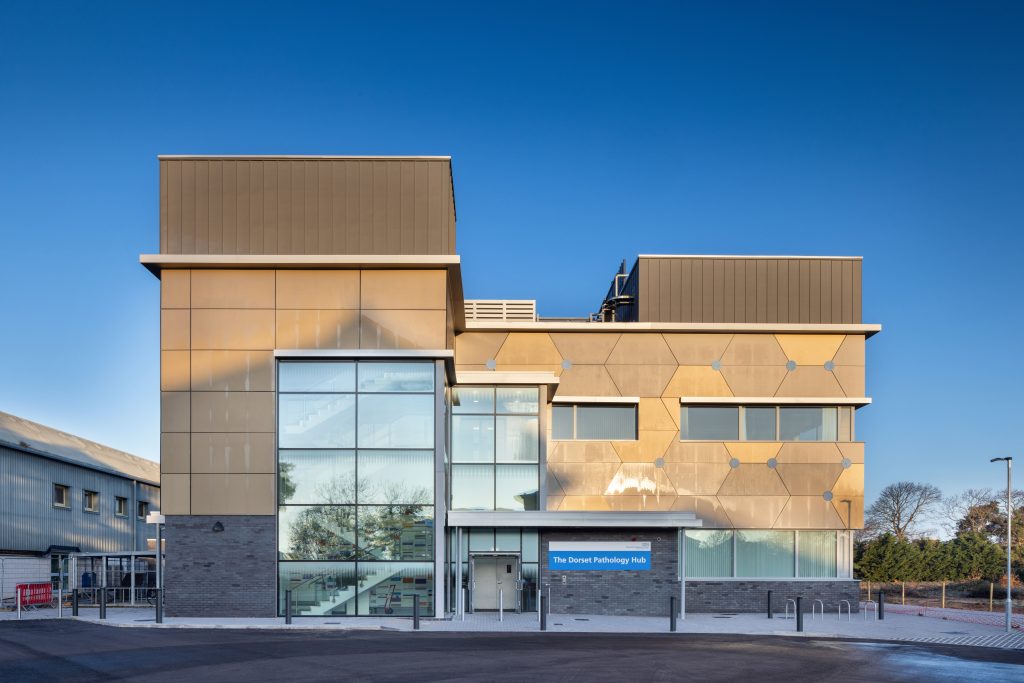Pathology labs are the unseen backbone of hospitals, delivering fast, accurate data that guides life-saving medical decisions. Despite their importance, these spaces are often overlooked — tucked away in the ‘back of house’ with cramped conditions and outdated fittings. A well-designed lab environment, however, is critical to both operational efficiency and staff wellbeing.
Workflow and Space Configuration
Efficient workflow is critical for a successful pathology lab space. To achieve this the layout must be designed to ensure that staff can move seamlessly between workstation without unnecessary backtracking or congestion. This means strategically placing equipment, storage and workbenches to match the natural flow of laboratory processes. A well-planned workflow reduces the risk of errors, speeds up diagnostics, and minimises physical strain on staff, who often work long hours in these spaces. Modular furniture systems are particularly beneficial here, as they allow for reconfiguration when equipment or processes change, ensuring the lab remains adaptable to evolving needs.
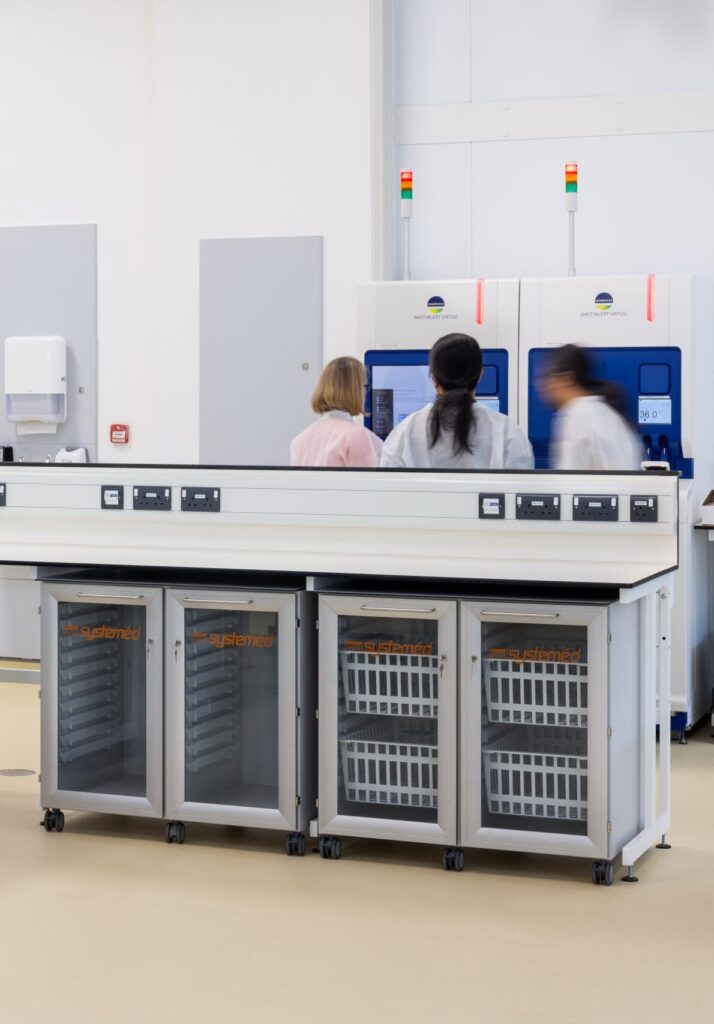
Vibration Control
Pathology labs house a range of sensitive diagnostic instruments that demand precision. Vibrations, however small, can interfere with the accuracy of results from devices like centrifuges. Guidelines suggest that workbenches should be constructed to minimise vibrations thereby ensuring the reliability of sensitive equipment. To mitigate this, laboratory workbenches must incorporate vibration-dampening materials and designs. Stable, heavy-duty benches with reinforced structures ensure that sensitive equipment operates without interference.
Support Framework
Many pathology labs rely on bulky, heavy machines for processes such as sample processing or tissue slicing. Standard work surfaces may not withstand the weight of such equipment over time, leading to potential structural failures. The Systeméd universal support frame system is based around popular modular sizes and very robust. Base frame modules are connected by spacer frames to suit the worktop dimensions and can be combined with three rear upstand options: standard upstands, trunking upstands and shelving upstands. Under bench shelving options are also available. Bench frames without upstands can be positioned back-to-back to create a universal island bench framework.
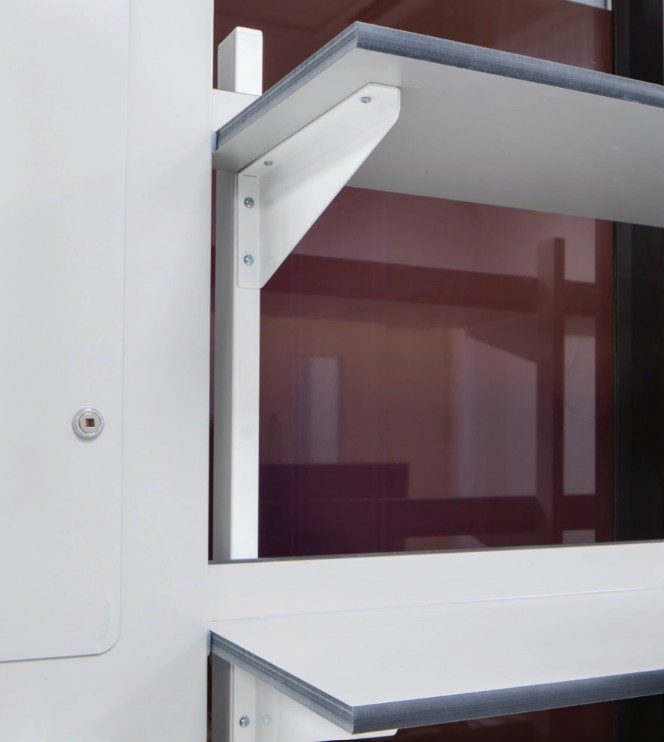
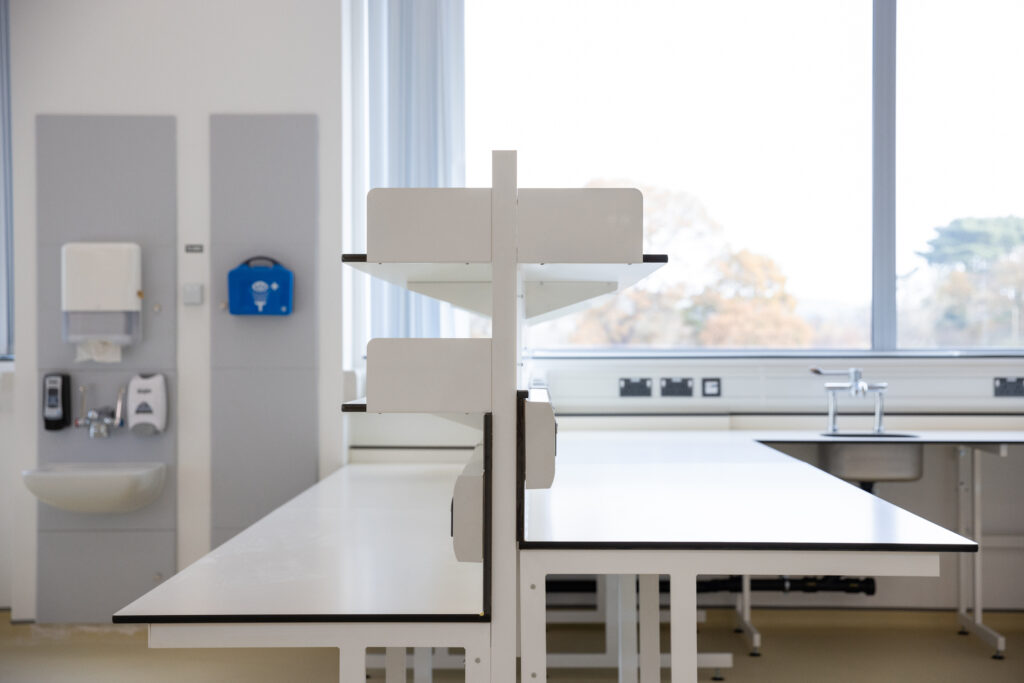
Infection Control
Infection control is a top priority when handling biological specimens in pathology labs. The design must minimise the risk of contamination which means avoiding surfaces with holes, slots, or joins where germs can collect. Seamless, non-porous materials, such as stainless steel or compact grade laminates, enable thorough cleaning and disinfection.
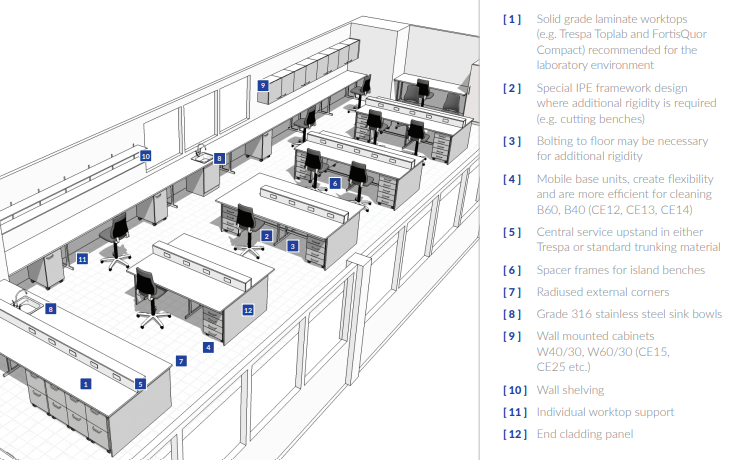
Case Study – The Dorset Pathology Hub at Royal Bournemouth Hospital
Designed for fast, accurate testing, this state-of-the-art facility processes over 9 million tests annually, helping diagnose conditions for 80% of patients in Dorset and beyond.
We were contracted to supply all the laboratory worktops and benching framework, shelving and storage cabinetry.
Overcoming Key Challenges
Delivering finished components to create a fully operational laboratory before the building was even constructed required:
Precision Planning – Using blueprints and 3D modelling to design an optimised layout.
Pre-Fabrication – Manufacturing modular workstations and cabinetry in advance.
Seamless Integration – Aligning mechanical, electrical, and plumbing (MEP) systems.
Future-Proofing – Ensuring flexibility for evolving technology and workflows.
Collaboration – Co-ordinating with architects, engineers, and scientists to bring the vision to life.
By anticipating future needs and building the lab in the design phase, we streamlined construction, minimised delays, and reduced costly redesigns.
“Stirling was incredibly responsive and proactive, adapting to multiple changes and ensuring seamless execution despite project delays.”
– Laura-Tuesday Brickwood.
View the full case study.
